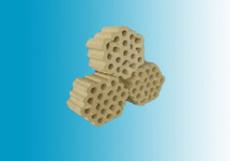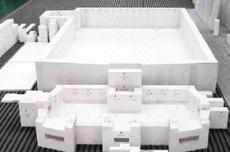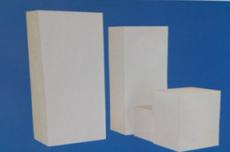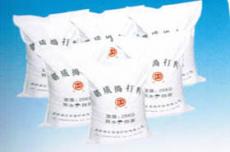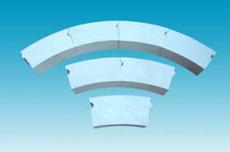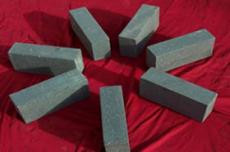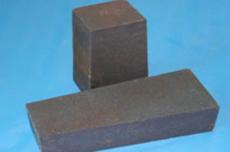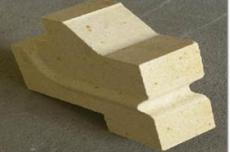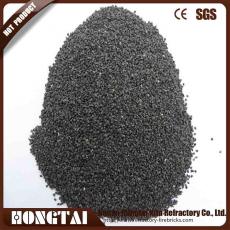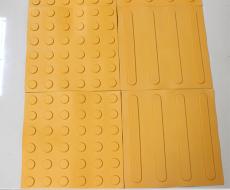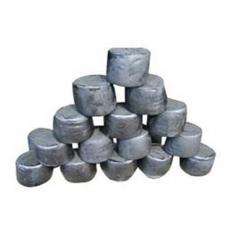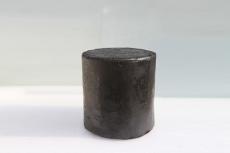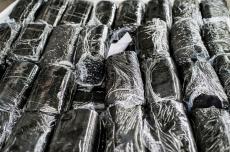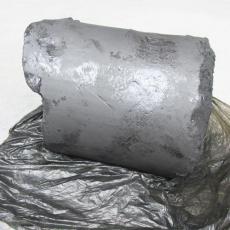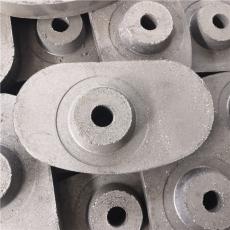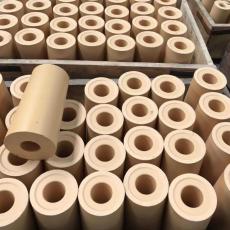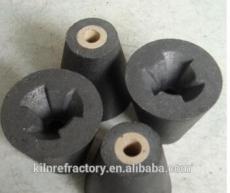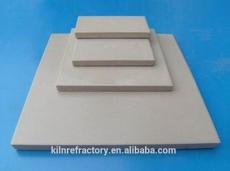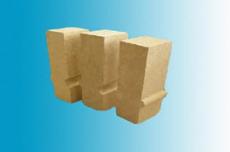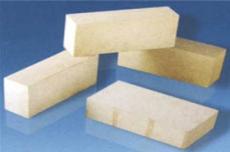
Refractory materials are important materials to ensure the normal operation of cement rotary kilns. Their performance and service life directly affect the operation rate, clinker output and product quality of cement kilns. Therefore, selecting suitable refractory materials and construction processes, making continuous technical improvements to the problems existing in the use of existing refractory materials, and promoting technological innovation are important ways to ensure the steady improvement of the operation rate of cement kiln systems, reduce the unit consumption of refractory materials, and reduce the heat consumption of cement production systems. It is also an effective way to help the cement industry save energy and reduce consumption, and develop high-quality and high-yield.
01 Application of sintered hanging bricks in kiln systems
At present, most of the vulnerable parts of refractory materials such as grate coolers, kiln head covers, tertiary air duct bends, and kiln tail smoke chambers in cement kiln systems use amorphous refractory materials. These vulnerable parts are affected by many aspects such as on-site construction conditions, maintenance, and baking. The refractory materials are subjected to the impact and damage of corresponding chemical erosion, scouring wear, mechanical stress, and thermal spalling. The service life of refractory materials is relatively short.
Premature damage to refractory materials increases the number of shutdowns and overhauls, reduces the operating rate of cement kilns, increases the cost of shutdowns and overhauls, and not only reduces the output of cement clinker, but also shortens the service life of refractory materials in other parts of the kiln system. In response to this situation, Jiangsu Huayao Guangyu has optimized and designed a technical solution for sintered hanging bricks based on years of technical experience and accumulation. It is applied to the vulnerable parts of refractory materials in cement kiln systems and has achieved good results.
02 Main technical parameters of sintered hanging bricks
(1) Silica-molybdenum hanging bricks: w(Al2O3) ≥ 60%, w(SiO2+SiC) ≥ 30%; volume density ≥ 2600kg/m3; apparent porosity ≤ 16%; compressive strength ≥ 1200MPa; load softening temperature T0.6 ≥ 1600℃; thermal shock stability (10100℃ water cooling) ≥ 10 times.
(2) Nano insulation board: w(SiO2)≥80%, w(ZrO2)≥15%; maximum operating temperature 1050℃; density 280kg/m3; compressive strength ≥0.35MPa; thermal conductivity ≤0.026W/(m·K) at 400℃, thermal conductivity ≤0.042W/(m·K) at 800℃.
(3) Sealing material: w(Al2O3)≥45%; volume density ≥2200kg/m3; 110℃, 24h flexural strength ≥6MPa, 110℃, 24h compressive strength ≥60MPa; 1100℃, 3h flexural strength ≥6MPa, 1100℃, 3h compressive strength ≥60MPa; linear change rate ±0.5%.
(4) Stainless steel tie rod accessories: material OCr25Ni2O.
03 On-site construction and installation of hanging bricks
The vulnerable parts of cement kiln refractory materials are mainly the kiln head hood wall and top cover, the hot end feeding part of the cooler, a section of the furnace wall and furnace top, the windshield wall, and the slope of the feeding room. These parts require the refractory materials to have good wear resistance. Traditional designs mostly use castable configurations, which have short service life and high replacement frequency. The wear resistance of refractory materials is related to the performance of the castables themselves and the construction quality. If the construction quality is not good and the castables are overwatered, the wear resistance will be significantly reduced. Therefore, the construction requirements of castables in these parts are high, and it is usually difficult to guarantee them on site. Secondly, it is difficult to dismantle the castables in these parts for replacement. After dismantling, palladium nails need to be re-welded, and then poured, cured, and baked, which consumes a lot and has low efficiency. The use of hanging brick technology is not only convenient for construction and replacement, but also conducive to improving and guaranteeing the quality and service life of refractory materials.
According to the actual application of many factories such as Taiwan Cement and Southern Cement, at present, the application effect of brick replacement technology is good, and the service life can reach 3~5 years. The service life of refractory materials is extended, the number of factory kiln shutdowns is reduced, the operation rate of the kiln system is improved, and the factory can further save energy and reduce consumption, improve clinker output and quality, and bring good economic benefits.
The hanging brick technology is easy to install and can effectively shorten the construction period and save time for the kiln shutdown and maintenance of cement plants. The hanging bricks have good wear resistance and stable quality, which can avoid quality fluctuations caused by on-site construction and ensure the stability of the quality of refractory materials in the entire use area.
